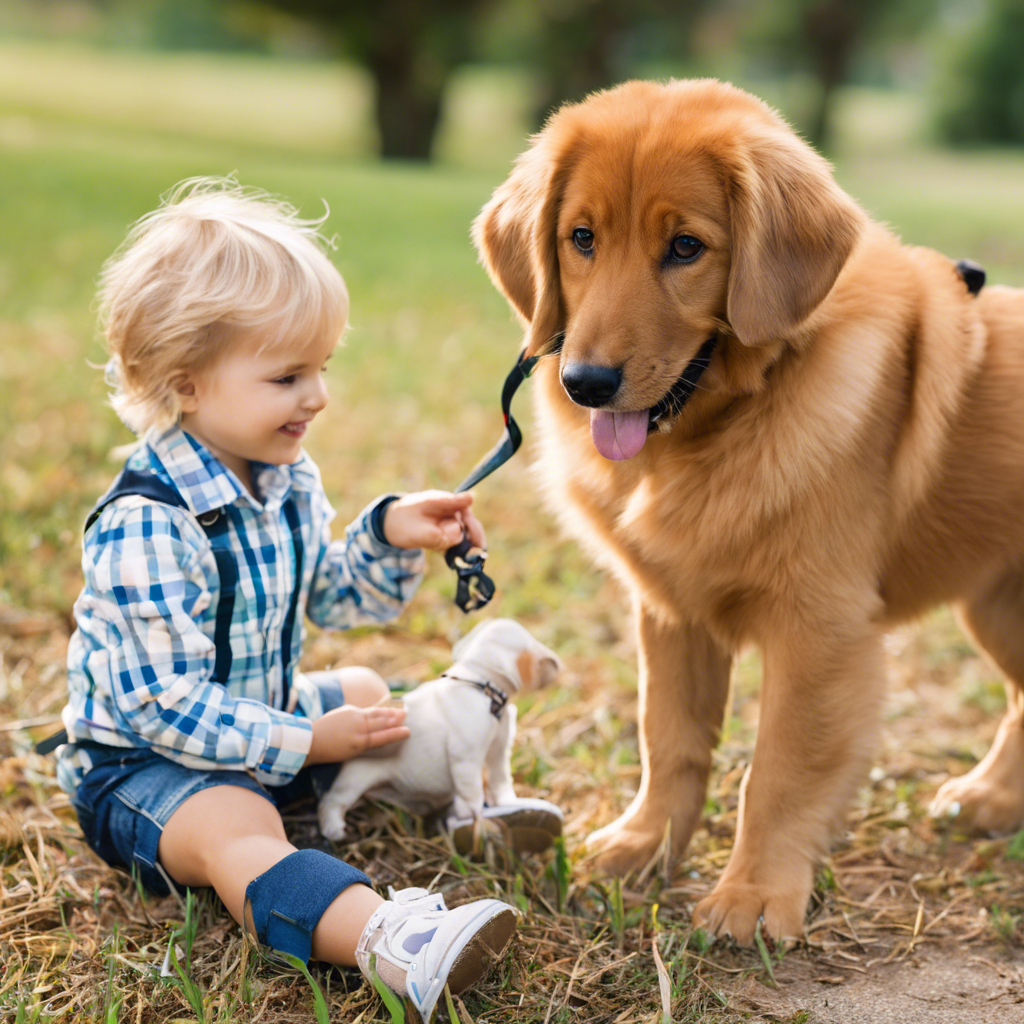Bringing home a new puppy is an exciting time for any family, but it’s important to ensure that the introduction to children is handled with care and consideration. Puppies are adorable bundles of energy, but they can also be delicate and require proper handling, especially when it comes to their interactions with kids. Teaching children how to interact safely and respectfully with the new family member is crucial for the puppy’s well-being and the overall harmony of the household. Here’s a guide to help you navigate this delightful yet potentially daunting process.
## Prepare Before the Introduction
Before the puppy arrives, prepare the children for their new role as puppy caretakers. Educate them about puppy behavior and the responsibilities they’ll share. Teach them that puppies are not toys but living creatures that require gentle handling, regular care, and lots of love. Explain that puppies need time to rest and that their space should be respected, especially when eating or sleeping. Encourage older children to read age-appropriate books or watch educational videos about puppy care and training, emphasizing the commitment and patience required.
**Setting Realistic Expectations:**
Discuss the reality of puppy behavior to manage expectations. Puppies may not instantly become their new playmates. Explain that they might need time to adjust to their new surroundings and that they could be scared or uncertain at first. Prepare them for the possibility of accidents, barking, and chewing, which are all normal parts of puppyhood. This will help prevent disappointment and encourage empathy.
## Choosing the Right Time and Place
Pick a calm and controlled environment for the initial introduction. Your home or a familiar outdoor space free from distractions is ideal. Ensure that everyone involved is relaxed and ready to give the puppy and children the attention they need. Avoid high-energy settings like playgrounds or busy parks, as these can overwhelm the puppy and make it harder to monitor interactions.
## Supervised First Meetings
Always supervise the first meetings to ensure safety and guide both the puppy and the children. Start with short, positive interactions, allowing the puppy to approach and retreat as they please. Encourage children to sit calmly and offer gentle pets, avoiding sudden movements or loud noises. This teaches the puppy that children are friendly and helps them feel secure.
## Teaching Proper Handling
Show children how to pet the puppy gently, using slow, strouses and always avoiding the face or tail. Demonstrate how to offer their hand for the puppy to sniff first, teaching them to respect the puppy’s personal space. Explain that hugging, a natural gesture for children, can make puppies feel trapped and scared. Instead, they should pet gently or offer treats to create positive associations.
## Games and Training
Involve children in fun training sessions, making it a game to teach the puppy basic commands like “sit” or “come.” This not only educates the puppy but also gives children a sense of responsibility and accomplishment. Use treats as rewards for both the puppy and the kids to reinforce good behavior. Games like fetch or hide-and-seek can also teach the puppy to play safely while strengthening the bond between them.
## Safety Precautions
**Bite Inhibition:** Teach children to recognize the puppy’s body language when it needs space. Puppies often nip or bite during play, so educate kids on how to respond calmly and safely, removing their hands and redirecting the puppy to a toy or treat. This helps with bite inhibition training.
**Time-Outs:** If the puppy becomes too excited or nippy, initiate a time-out. Teach children that this is a calm way to give the puppy a break and not a punishment. Designate a safe, quiet area for the puppy to settle down, ensuring the children understand that this is part of the training process.
**Health Considerations:** Discuss basic hygiene practices, like washing hands after playing, to prevent the spread of germs. Emphasize the importance of keeping the puppy’s belongings separate from theirs to avoid accidental ingestion of pet products.
## Encouraging Patience and Empathy
Puppies need time to adjust to their new home and family. They might prefer solitude at times, and children should respect this. Encourage kids to watch the puppy from a distance, drawing or writing about their observations, fostering patience and an understanding of the puppy’s needs.
## Involving Older Children
Older children can take on more significant responsibilities, such as feeding the puppy under supervision or helping with grooming. They can also assist with puppy-proofing the house, ensuring the environment is safe and stimulating. Involving them in these tasks creates a sense of ownership and care.
## Consistent Routine
Puppies thrive on routine. Establishing a consistent daily schedule for meals, play, and rest will benefit both the puppy and the children, providing structure and predictability. A well-rested and content puppy is more likely to engage positively with the children.
## Building a Lifelong Bond
Regular, supervised interactions will help the puppy and children become comfortable and respectful of each other. As they grow together, their bond will strengthen, and the children will learn valuable lessons in caregiving and empathy. This foundation will ensure a lifelong friendship between the puppy and the kids, creating wonderful memories and a deeper connection with the family.
Introducing a puppy to children is a delightful challenge, requiring preparation, patience, and supervision. By teaching kids how to interact safely and respectfully, you’ll foster a loving and responsible relationship within your family, setting the stage for countless moments of joy and companionship. Enjoy the journey and cherish the memories created along the way!

